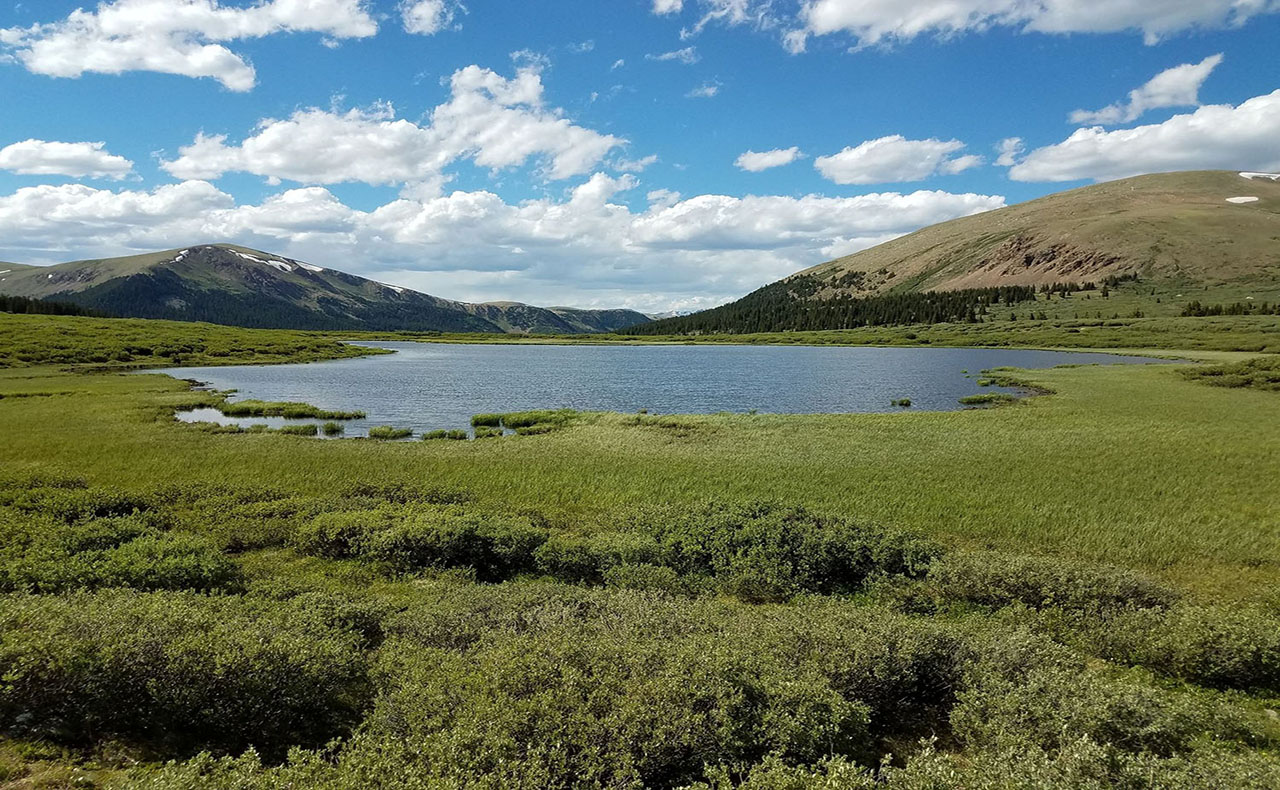Finding Resilience on a Mountaintop

Published
“Can you teach them resilience? I need them to be mentally tough.”
How many of us have had this request from coaches, administrators, and parents? It is difficult to teach resilience, especially when it still lacks a formal definition. Luthar, Cicchetti, and Becker offer one understanding of resilience, as “a dynamic process encompassing positive adaptation within the context of significant adversity” (2000).
I recently endured adversity while summiting my first 14er, otherwise known as a mountain over 14,000 feet. This experience helped me to find my own understanding of resilience, and has had a substantial impact on my work with athletes.
The trail to the top of Mt. Bierstadt was covered in snow. I stood at the trailhead, staring at the mountain in the distance. The summit and I were separated by miles of vast land, still green in some places despite the cold weather. Everything felt big. In that moment, my awe had reduced me to feeling very small, but also very mighty. I had never climbed a mountain of this magnitude before, but something inside of me felt ready to try. My sport is distance running, but moving from a state that was below sea level to a place where oxygen felt scarce had me interested in pursuing slower adventures. If I couldn’t run long, I could at least try to hike far.
In life, there are often many potential paths to success. In front of me now were multiple paths, created by dozens of footprints in the snow. During the summer, trails are much more defined, but because of the snow, others before me had attempted to make their own path. Normally, I would be excited at the prospect of forging my own path to success, but on a mountain in winter conditions, it is generally best to stick to the intended trail.
I fixed my eyes on the top of the mountain, and hoped that doing so would steer me in the right direction. Unfortunately, forgetting to watch my steps, I wound up off course a lot of the time. As I tried to maintain direction, I pressed on, my lungs burning from the lack of oxygen. My body began to ache due to the strain of ascension. Hours and miles later, I neared the summit. This final stretch of mountain looked very different from the landscape I had walked through to reach that point. There were no more trees, or bushes, or grass, and the path had been replaced with giant rocks. It looked like it was time to climb.
My adrenaline was wearing off and the voices of doubt started whispering to me that I was foolish for attempting this summit. I reminded myself how far I had already come and in doing so, continued to push forward.
The wind whipped against my face, the only part of my skin still exposed to the elements. The rocks were slick and it was extremely difficult to pull my stiff, half-frozen joints upwards. It would have been so much easier to just turn around, and trust me, I thought about it! Now that I was almost 14,000 feet up, the summit seemed much less obvious, but the thrill of being so close to my goal kept me going.
I reached the highest point, alone. There were no signs, no markers, and no other hikers. I stared out at the valleys and peaks below, waves of blue and white gently rolling into the horizon for miles. Standing above it all, I felt humbled to have made it this far.
Perhaps the biggest challenge in climbing a mountain is that the summit is only the halfway point. Feeling fatigue really set in, I scrambled back down to a flatter part of the trail to refuel. While I had made it through the toughest part of the hike, I still had miles to go before my journey was finished.
At that point of the day, the sun was shining, melting away the snow. The descending trail was more visible than before, though a bit more slick and muddy. I felt powerful, knowing that I had been to the mountaintop and that I had traversed this trail before. Compared to before my summit, this part of the hike was nothing! Despite my achy knees, I practically flew back to the start of the trail.
When you complete a race, crossing the finish line is an experience filled with grandeur: music, cheering, signs, and a medal. This finish line was an empty parking lot in the middle of nowhere, and I was the only one to congratulate myself. The only sound was my heavy breathing, finally beginning to slow down. I turned back to look at the mountain one more time, feeling grateful for the experience.
This hike gave me the opportunity to prove that I could accomplish seemingly impossible goals, physically and mentally, even if they did not lead to obvious rewards in the end. While resilience may be a personality trait, from this experience, I believe that anyone can strive towards challenging goals. Since I have braved the mountaintop, I feel more able to encourage my athletes to do the same.
In teaching athletes to find resilience, encourage them to:
- Engage in appropriately challenging activities. You don’t necessarily have to have your clients hike a 14er, but having them identify and successfully overcome self-determined obstacles can help develop resilience.
- Dedicate time for reflection. I spent most of the hike and weeks after it thinking about what that day meant to me and how it would help me move forward in various aspects of my life. Start by having them think and/or write about: How did this experience challenge me? How was I able to push through, even when the odds were against me? What does this experience mean for future challenges I may face?
- Seek support. Having a community that supports me in my challenging moments also helps me summit metaphorical mountains in my daily life. Help your clients determine who is or could be in their support network.
Resilience may not be easily taught, but it can be found on a mountaintop. Be that support for your clients, encourage them to reach personal summits, and allow them the space to share their stories.
Reference
Smith, B. W., Dalen, J., Wiggins, K., Tooley, E., Christopher, P., & Bernard, J. (2008). The brief resilience scale: Assessing the ability to bounce back. International journal of behavioral medicine, 15(3), 194-200.
Share this article:
Published in:





